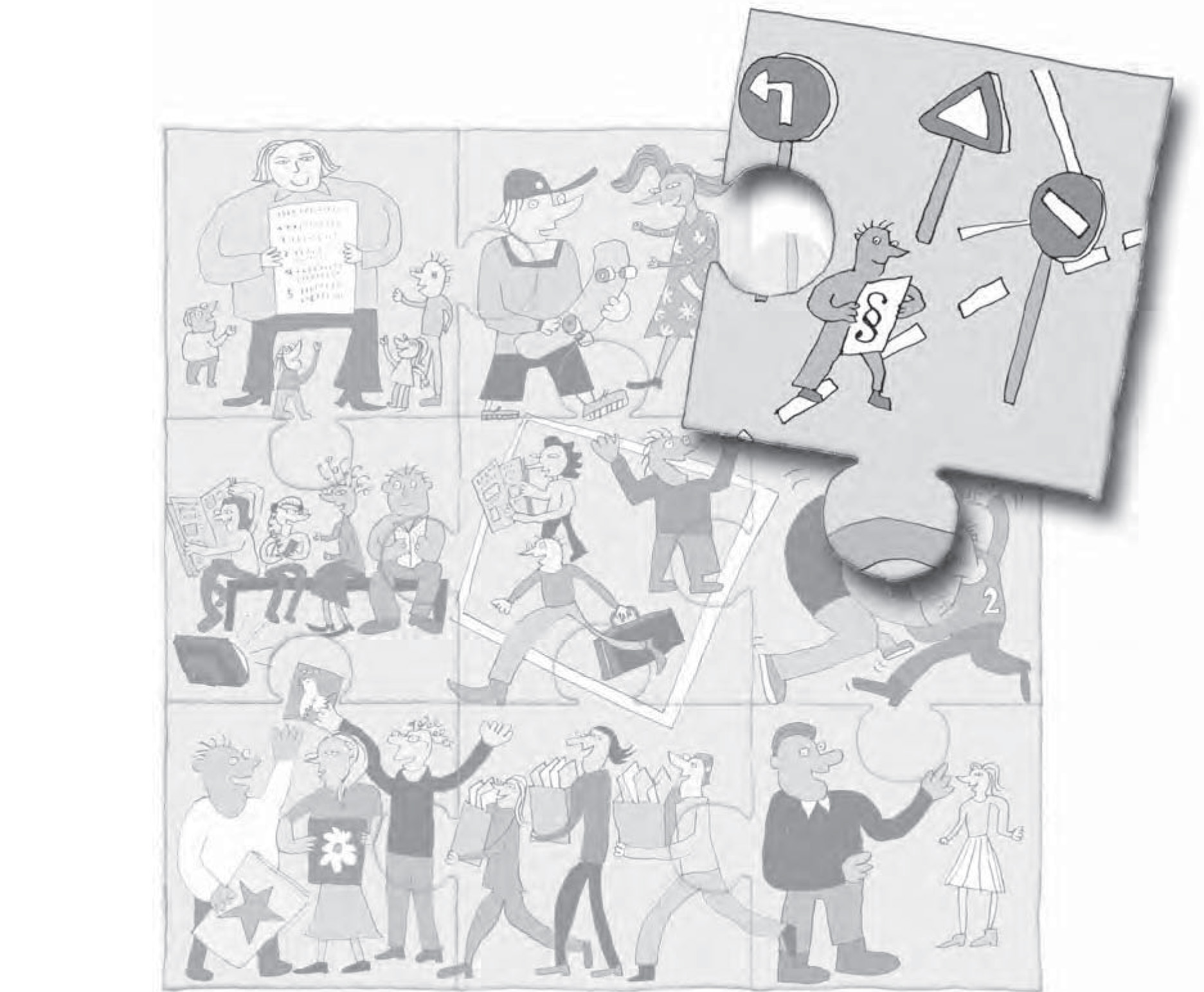UNIT 8: Rules and Law
Living Democracy » Textbooks » Living in democracy » Part 4: Power and authority » UNIT 8: Rules and LawWhat sort of rules does a society need?

Laws of some kind are essential for the fair and efficient running of any society. Laws apply in all situations, to everyone within the community of a country – although there are certain groups, such as children, who are not affected by some laws until they reach a certain age.
One of the ways in which the law can be divided up is into what is known as civil and criminal law. Civil law provides a way of settling disputes between individuals and groups of people. Criminal law covers behaviour that the state has decided must be discouraged or prevented.
Laws can never be perfect, however. They are human creations and sometimes need changing. They may become out of date, ineffective or be simply unfair on certain groups in society.
Law can never be divorced from politics. For it is within political systems that laws are made and changed. In a democratic political system it is important that all citizens are able to have an equal say about this. It is also important that the law is applied equally to all citizens, and that no one is above the law. This concept is sometimes known as the rule of law.
Finally, laws should comply with human rights. This is important in order to make sure that laws are fair and that they are not abused as a means of oppression or dictatorship. Most democratic systems therefore rely on written constitutions that provide a human rights framework that stands above the laws of the country. Some countries have also established constitutional courts to decide whether laws are in line with the constitution or not.
Learning for Education for Democratic Citizenship and Human Rights
|
UNIT 8: Rules and Law
What sort of rules does a society need?
| Lesson title | Learning objectives | Student tasks | Resources | Method |
|
Lesson 1: Good law -bad law |
To be aware of and understand the factors that determine what makes a good law. | To discuss school rules and identify what makes a good school rule. To discuss laws and identify what makes a good law. To examine critically an area of law in their country, e.g laws on alcohol. To propose and justify their own new school rule or law. |
Two cards for each student – one labelled with a letter “A” (in green), the other with a letter “B” (in red). Handout – Laws on alcohol in our country Markers and a large sheet of paper for each group of 4-6 students. Flip chart or a large piece of paper for display in class. |
Small group work and class discussion. |
|
Lesson 2: At what age? |
To examine how the law applies to young people. | To work out the legal ages at which young people become entitled to take part in different adult activities. To consider how appropriate the current law is for young people. | Three large signs labelled “A”, “B” and “C” put up on three different walls of the classroom. Copies of student handout 8.1 – one for every two students. Marker pens and a large piece of paper each for group of 4-6 students. |
Pair work small group work and class discussion. |
|
Lesson 3: You make the law |
To examine the question of whether young people who have broken the law should be punished at all, and if so, how. | To consider the different factors that come into play when deciding what is a fair punishment for a crime. | A copy of the story and extra information for the teacher. | Small group work and class discussion. |
|
Lesson 4: Rules of evidence |
To understand the rules of evidence in a court of law. | To consider the kind of evidence that should count in a court of law and the kind of evidence it would be wrong to use. | Discussion cards (student handout 8.2) for each group of 4-6 students. | Small group work and class discussion. |
- Lesson 1: Good law – bad law
What makes a good law? Learning objectives To be aware of and understand the factors that determine what makes a good law....
- Lesson 2: At what age?
How should the law apply to young people? Learning objectives To examine how the law applies to young people. Student tasks...
- Lesson 3: You make the law
How do you deal with young offenders? Learning objective To examine the question of whether young people who have broken the law...
- Lesson 4: Rules of evidence
What evidence should count in a court of law? Learning objective To understand the rules of evidence in a court of law....
- Student handout 8.1: A questionnaire: at what age?
At what age does the law in your country allow young people to: Have a driving licence? Get married? Vote in elections?...
- Student handout 8.2: Discussion cards
A police officer tells the court that Manuel confessed he had stolen the car when he was being questioned at the police...
- 8.1 Background information for teachers: Integration, not criminalisation
Thomas Hammarberg, Commissioner for Human Rights, Council of Europe In most European countries, teenagers are not dominant in the overall crime statistics....
- 8.2 Background information for teachers: Convention on the Rights of the Child
Adopted by the General Assembly of the United Nations on 20 November 1989 “Article 37 States Parties shall ensure that: (a) No...

